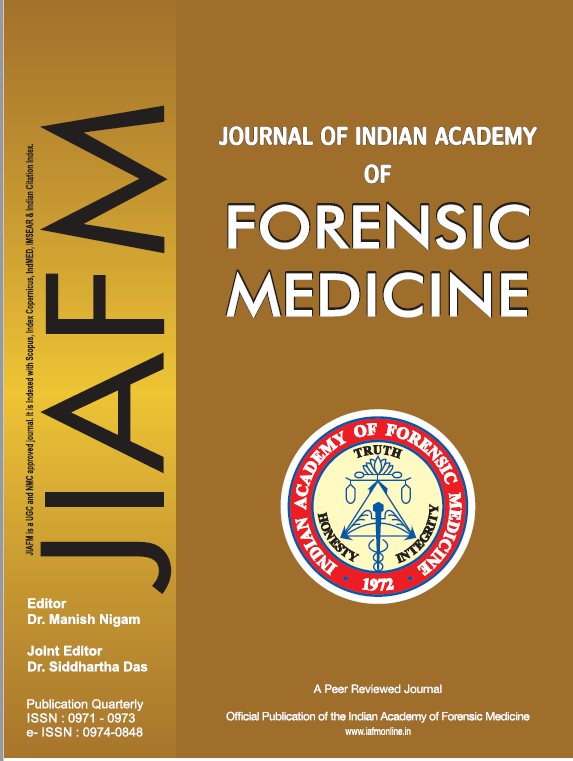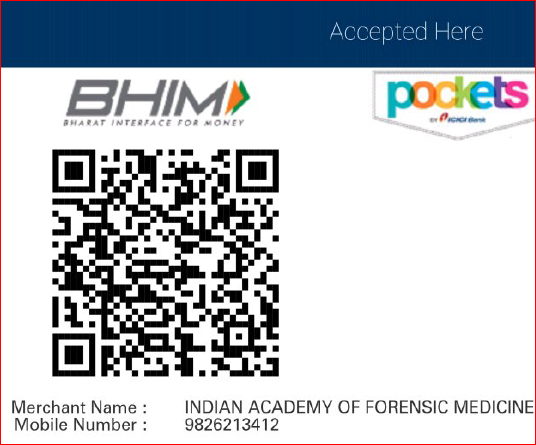Hemopericardium with Subdural Hemorrhage: A Rare Case
DOI:
https://doi.org/10.48165/Keywords:
Intracranial Hemorrhage, Hemopericardium, Post-mortem, Aortic AneurysmAbstract
The incidence of simultaneous occurrence of intracranial hemorrhage and hemopericardium due to the rupture of a dissecting aneurysm is very rare. We describe an autopsy case of a 52-year-old male with hypertension who died suddenly. He had been treated for hypertension. During post-mortem examination we found pericardial cavity filled with blood and blood clots. This hemopericardium was due to rupture of dissecting aortic aneurysm. Ascending aorta shows ruptured dissecting aortic aneurysm [De Bakey type 2]. Intramural hematoma present in the wall of ascending aorta. Histologically, the wall of the aneurysm revealed cystic medial necrosis, which appears to idiopathic in nature. There was also evidence of subdural hemorrhage. After analyzing the findings the opinion as to the cause of death was “Hemopericardium due to rupture of dissecting aortic aneurysm along with intracranial bleeding.” As per our view in present case the subdural hemorrhage was occurred after the rupture of dissecting aortic aneurysm when the venous pressure increases, leading to the rupture of bridging vein in subdural space.
Downloads
References
Ramanath VS, Oh JK, Sundt TM, Eagle KA. Acute aortic syndromes and thoracic aortic aneurysm. Mayo Clin Proc. 2009; 84(5):465–481.
Massumi A, Mathur VS. Clinical recognition of aortic dissection. Texas Heart Inst J 1990; 17: 254–6
Hirst AE, Johns VJ, Kime SW, Huntington RW. Dissecting aneurysm of the aorta. A review of 505 cases. Medicine 1958; 37: 217–22
Biddinger A, Rocklin M, Coselli J, Milewicz DM. Familial thoracic aortic dilations and dissections: A case control study. J Vasc Surg 1997, 25:506-11.
Gammie J, Katz WE, Swanson ER, Andrew P. Acute aortic dissection after blunt chest trauma. Trauma 1996, 40(1):126-127. 6. Lindsay J Jr, Hurst JW. Clinical features and prognosis in dissecting aneurysm of the aorta. A reappraisal. Circulation 1967; 35:880-8
Isselbacher EM. Diseases of the aorta. In: Braunwald E, Zipes DP, Libby P (editors). Heart Disease:A Textbook of Cardiovascular Medicine. 6th ed., Volume 2, 2001. W.B. Saunders Company: Philadelphia, USA. P. 1422-1456.
Isselbacher EM. Diseases of the aorta. In: Goldman L, Ausiello D (editors). Cecil Textbook of Medicine. 22nd ed. Volume 1, 2004. Saunders: Philadephia, USA. P. 460-465. .
Davies DH. Idiopathic cystic medial necrosis of the aorta. British Heart journal 1941; 3(3): 166-170.
Aoyagi S, et al. Spontaneous rupture of the ascending aorta. Eur J Cardiothorac Surg.1991; 5 (12):660-2.


